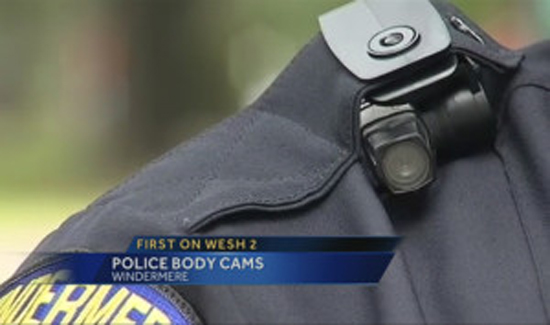Body Cam Screw-ups Lead to Mistrial

If your agency has body cams but no body cam policy‚ that’s a problem. In Colorado, a deputy’s undisclosed use of a body-worn camera caused a mistrial in Teller County.
However, no one has been disciplined for any infractions five months later. In fact, the Teller County Sheriff’s Office hasn’t investigated according to Sheriff Mike Ensminger.
In a recent interview with local newspaper The Gazette, Ensminger said an internal investigation was stymied in part by a judge’s gag order barring anyone at the Sheriff’s Office from discussing the case.
But the gag order was lifted last October. The sheriff says he didn’t find out about that until Dec. 19. At that point he contacted the judge directly after a follow-up inquiry by the newspaper. “My hands were tied until I found that information out,” Ensminger told reporters.
The adoption of body cams for law enforcement in the area has not gone smoothly.There was the accidental destruction of footage in more than 1,000 cases at the Fountain Police Department as well as multiple delays when the Colorado Springs Police Department’s tried to outfit all of their 600 officers with body cams.
The absence of an investigation by the Teller County Sheriff’s Office over the undeclared body cam use is interesting given the apparent indications that more than one deputy used a body camera in some capacity. In a Sept. 19 email obtained by The Gazette, Teller County prosecutor Chris Sutton acknowledged that “deputies with Teller County Sheriff’s Office may have obtained body camera footage during some criminal investigations that may have been not retained or (turned over) to defendants.”
Under Colorado law, body cam footage gathered by officers equipped with body-worn cameras must be preserved and turned over to the defense. Failure to do so will produce an overwhelming likelihood of a mistrial.
And while the Teller County Sheriff’s Office appears to have some body cams, it does not have a way to store or distribute the footage. Current Department policy has banned the use of body cams for years.
The controversy started last August after Deputy Sanel Lilic testified at a trial that he wasn’t wearing a body camera during his arrest of Cole Simmons on charges of vehicular theft.
Lilic said that on the first day of testimony. But when he retook the stand later that day he changed his story saying that he’d been wearing a body cam but had forgotten about it. Lilic told the court he was fitted with the camera on the day of Simmons’ arrest as part of a “trial run by the agency” to see if the cameras were effective at night according to transcripts.
He told the court that he recorded footage of Simmons’ arrest and handed it over to a corporal. The corporal handed it over to a commander. That commander allegedly ordered that the footage be destroyed because deputies could be heard using obscenities, a trial transcript shows.
And that’s what caused the mistrial.
District Judge Theresa Cisneros declared a mistrial and attorneys for the defendant then had all kinds of questions.
Cynthia McKedy was representing Simmons.
“How long have they been wearing body cams? Have they been destroying the footage?” McKedy asked. “How many other cases in Teller County have this issue?”
As for the whole “trial run” program referred to by the deputy – it’s news to the boss. “No deputy of mine has ever been authorized to wear a body camera,” Ensminger previously told The Gazette. “We don’t have a pilot program and never have.”
Sheriff Ensminger also said his office can’t afford to purchase cameras for its deputies because they don’t have the funding or technological capability to preserve the footage.
Which, of course, leads to the obvious question: “Where did the deputies’ body cam come from?”














